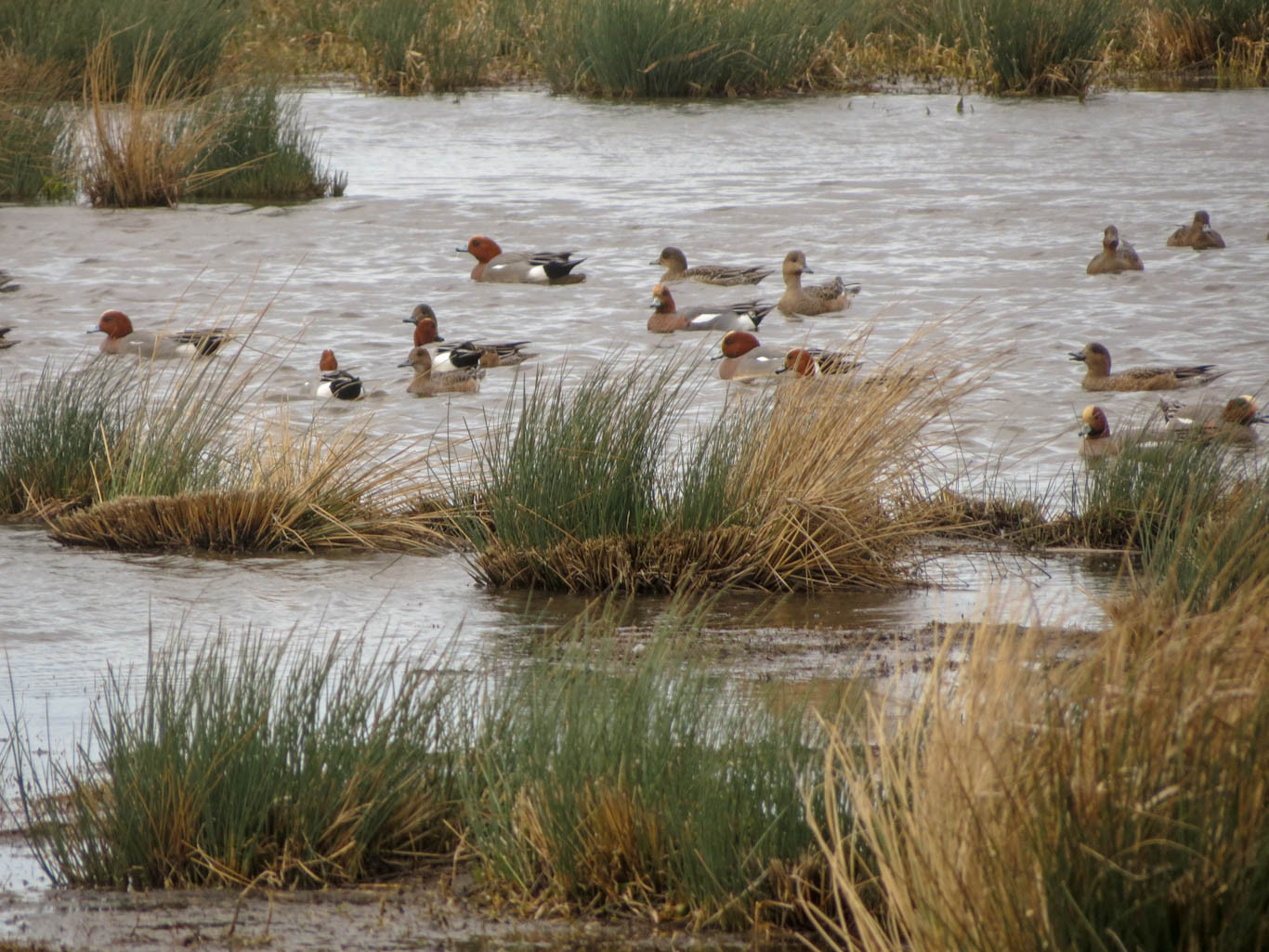Opis
RSPB Buckenham Marshes is known for being one of only two places in the UK where a small flock of ges zbozowa regularly spends the winter. Its sister species the gęś tundrowa can turn up as well. Many gęś krótkodzioba and gęś białoczelna also winter here.
Cantley Marshes is essentially an extension of the reserve further down river and the ges zbozowa may be anywhere in the area. The wintering geese are joined by several thousand świstun, czajka, siewka złota and gawron, as well as hundreds of cyraneczka. These may attract birds of prey such as sokół wędrowny and błotniak stawowy, creating a spectacle as they cause large flocks of birds to take to the sky.
In spring, the świstun leave and the area comes alive with breeding migrant and resident waders including czajka, krwawodziób, kszyk, szablodziób and ostrygojad. płomykówka (zwyczajna) also breed here and can be seen hunting in daylight in the summer. In autumn, a variety of waders can be seen on passage, including the likes of biegus malutki, batalion, biegus krzywodzioby and samotnik, with the pools by Cantley Sugar Factory being a particularly good site for them. There are also plenty of Chinese water deer in the area.
Szczegóły
Dostęp
For Buckenham Marshes:
By train: A number of trains on the Norwich to Great Yarmouth and Lowestoft (Wherry Lines) services call at Buckenham station by request at the weekend. The entrance to the reserve is adjacent to the station. Check connections on the National Rail Enquiries website, or call 08457 484950.
By bus: An hourly bus service from Norwich stops 1.5 miles (2.4km) from the reserve on the Brundall to Strumpshaw Road at the junction of Long Lane and Stone Road (weekdays and Saturdays only). From the bus stop (arriving from direction of Norwich), walk towards Brundall for 40m, then turn left down Stone Road and immediately turn right into Low Road. Turn right at the road junction and continue until Buckenham station.
By bike: The Yare Valley cycle route runs close to the reserve. Cycling from Brundall, head east towards Strumpshaw. After the Strumpshaw sign, turn right into Stone Road, and immediately right. Turn right at the road junction and continue until Buckenham train station, adjacent to the marsh.
By road: The reserve is best approached from the village of Brundall which lies east of Norwich just off the A47. From the A47 roundabout, drive through Brundall towards Strumpshaw. Turn right into Stone Road. Follow Stone Road and take the second road on the right (also Stone Road). Take the first turn on the right onto Station Road, which leads to Buckenham train station and Buckenham Marshes. Click on the P in the map to get directions.
There is a path from the car park to the riverbank which can be followed to the east all the way to Great Yarmouth on the coast. There is also an accessible parking space right next to the viewing shelter.
For Cantley Marshes:
You can take the train going through Buckenham to the next station at Cantley or you can walk from Buckenham Marshes down the north bank of the River Yare for a few miles. Alternatively, you can drive round to Cantley, taking Burnt House Road and parking on Malthouse Lane, then crossing the railway line. Make sure to stick to the footpaths rather than going into the fields.




